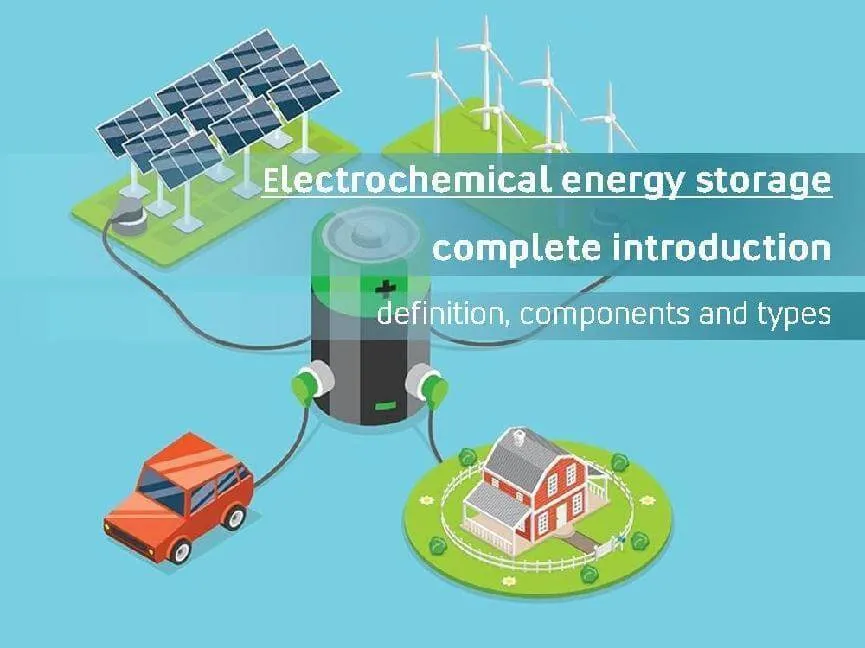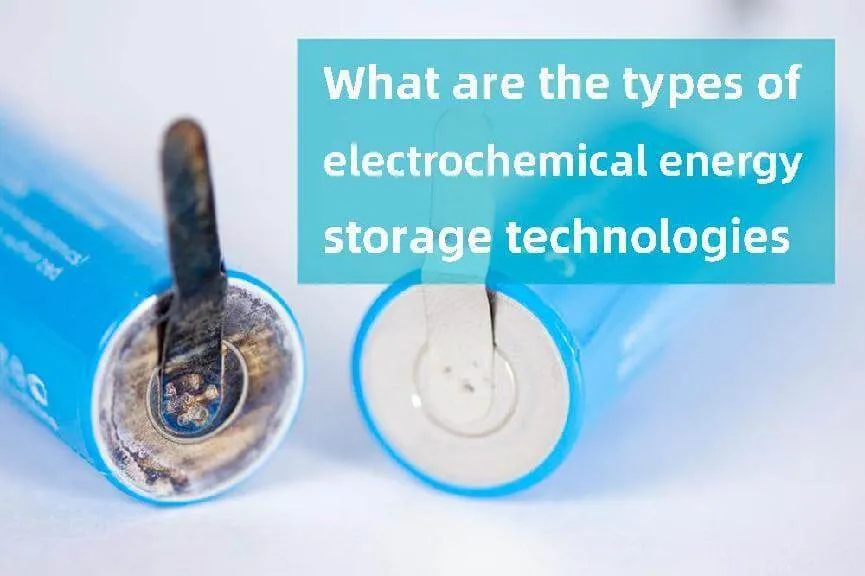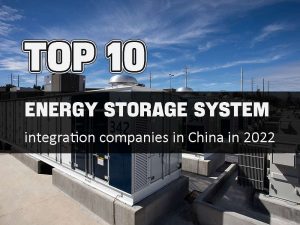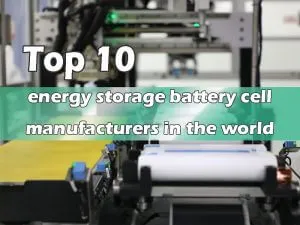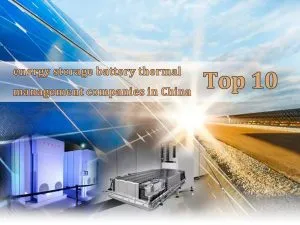Electrochemical energy storage complete introduction-definition, components and types

At present, there are two mainstream energy storage technologies, namely lithium electric energy storage represented by lithium iron phosphate battery and pumped storage with the most mature technology, the largest scale of use and the lowest cost.
New energy storage technologies, such as sodium ion battery, all vanadium flow battery and hydrogen fuel energy storage, have started to take off and accelerated their commercial layout. This article will introduce electrochemical energy storage from various aspects including definition, components, types and so on.
What is electrochemical energy storage
Electrochemical energy storage refers to the energy storage technology and measures that use chemical batteries to store electric energy and release it when needed. According to the type of technology, energy storage can be divided into electrochemical energy storage, mechanical energy storage, electromagnetic energy storage, chemical energy storage, thermal energy storage, etc.
Among them, electrochemical energy storage has the advantages of high energy density, high technology maturity, long service life, long-term economy, and is the most potential energy storage technology.
At present, electrochemical energy storage technology is the key direction of development, and lithium ion batteries, the best rechargeable batteries, are the focus of the development of electrochemical energy storage technology. The large-scale application of electrochemical energy storage technology needs to meet three basic requirements:
- High security
- High cost performance
- Low pollution
Composition of electrochemical energy storage system
The electrochemical energy storage system is mainly composed of battery pack, battery management system (BMS), energy management system (EMS) and energy storage inverter (PCS).
Battery
As required, the energy density of energy storage battery is higher than 145Wh/kg, and the energy density of battery pack is higher than 110Wh/kg. Cycle life higher than 5000 times and capacity retention rate higher than 80%. The current electrochemical energy storage technology, especially lithium battery energy storage technology, has entered a new revolution cycle.
New products and technologies such as large cell, high voltage, water cooling/liquid cooling have emerged one after another. The energy storage system continues to evolve towards large capacity. At the same time, sodium ion battery may occupy a place in the future by virtue of its cost advantage.
In terms of cost, the cost of battery pack accounts for the largest proportion, accounting for about 70% of the total electrochemical energy storage system, followed by energy storage inverter and battery management system, accounting for about 10% each.
In terms of function, the battery pack is usually composed of multiple battery modules in parallel, and each battery module is composed of multiple electric cells in series or parallel, which is the core of the electrochemical energy storage system and is mainly responsible for the storage and release of electric energy in the energy storage system.
Battery management system
It mainly monitors various data during the charging and discharging process of the battery pack, such as temperature, current, voltage and state of charge (SOC), and sends out alarm signals when the data is abnormal, so as to ensure the safe and stable operation of the energy storage system.
Energy management system
It is mainly composed of basic functions and application functions. Basic functions refer to computer, operating system, EMS support system, etc; The application functions include data acquisition, data analysis, network monitoring and energy scheduling.
Energy storage inverter
The energy storage inverter is composed of DC/AC bidirectional converter, control unit, etc. It can control the battery charging and discharging, and is responsible for the conversion of AC and DC. At present, the battery energy storage system mainly adopts centralized PCS, and the parallel connection of multiple batteries will cause the imbalance between battery clusters.
After a long time, the actual output of some batteries in the parallel connection battery cluster will be insufficient, while the other part will exceed the utilization rate; The string PCS can achieve cluster level management, improve system life, and improve discharge capacity throughout the life cycle. The trend of large-scale application has been reflected.
What are the types of electrochemical energy storage technologies
At present, lithium ion battery and lead-acid battery are the most mature commercial applications, while sodium ion battery, water system zinc ion battery, liquid flow battery and other emerging electrochemical energy storage technologies are still in the early stage of development.
Lithium ion battery
It is composed of positive pole, negative pole, separator, electrolyte and battery shell. The positive pole material directly determines the capacity of the battery and is the most critical material. Lithium ion batteries are mainly divided into lithium cobalate battery, lithium manganate battery, nickel cobalt manganese ternary lithium battery and lithium iron phosphate battery according to different cathode materials.
Sodium ion battery
The energy is stored through the intercalation and de intercalation of alkali metal ions in the positive and negative electrode materials. The ion radius of sodium ion is larger than that of lithium ion, the relative atomic mass is larger, and the theoretical specific capacity is lower. However, its raw material resources are rich, and the cost is only 1/70 of lithium.
Since sodium and aluminum metal will not undergo alloying reaction at low potential, cheap and light aluminum foil can also be used as the negative collector of sodium ion battery, thus further reducing the material cost of the battery and improving the energy density.
Water system zinc ion battery
The new secondary battery with metal zinc as the negative electrode overcomes the disadvantages of traditional organic lithium battery and lead-acid battery, such as high toxicity, flammability, low cycle life, and high production cost. It can continue to provide a stable power supply with high safety. The energy density of zinc ion battery is 250 Wh/kg, which is comparable to that of lithium ion battery.
Liquid flow battery
A new large-scale electrochemical energy storage technology that can store and output electric energy through the reversible state change of liquid active substances. There are many kinds of liquid flow battery, including ferrochrome liquid flow battery, zinc bromine liquid flow battery, all vanadium liquid flow battery, among which all vanadium liquid flow battery is the most mature.
Metal air battery
A special fuel cell that generates electric energy through oxidation and reduction reaction between metal and oxygen in the air. The main metal air batteries are lithium air batteries, aluminum air batteries, magnesium air batteries, etc. The electrolyte of aluminum air battery is water electrolyte, which has no explosion risk and good safety performance.
Aluminum ions generated during battery discharge combine with hydroxide ions to form precipitation, which can be recycled. When the battery power is exhausted, only the water electrolyte and metal aluminum block need to be replaced to continue to use, eliminating the trouble of long-term charging.
Lead carbon battery
The capacitive lead-acid battery improved from the traditional lead-acid battery has the advantages of super capacitance, high power and long cycle, but also retains the high energy density of the lead-acid battery by adding activated carbon with capacitive properties to the foam lead anode.
Electrochemical energy storage industry chain and major companies
The electrochemical energy storage industry chain, like other industries, consists of upstream, midstream and downstream. And a great number of energy storage battery companies do well in this field.
Upstream
Upstream of the electrochemical energy storage industry chain, it is mainly a variety of raw material suppliers, including cathode and anode electrode materials, electrolyte, battery separator, electronic components, special auxiliary materials, etc.
According to statistics, upstream companies in the electrochemical energy storage industry chain mainly include: Ronbay Technology, Tianqi Lithium, BTR, Shanshan, BYD, CATL, etc.
Midstream
The midstream of the electrochemical energy storage industry chain are mainly energy storage system integration and installation manufacturers, including battery pack, battery management system (BMS), energy management system (PMS), energy storage inverter (PCS), hardware system, software system and other electrical equipment.
According to statistics, the companies in the middle of the electrochemical energy storage industry chain mainly include: CATL, BYD, GOLD ELECTRONIC, Kgooer, Xieneng, SUNGROW, NARADA, Pylon Tech, EVE, HIGEE, HiNa Battery, etc.
Downstream
Downstream of the electrochemical energy storage industry chain, it mainly covers various specific application scenarios including the power generation side, the grid side and the user side, such as new energy power stations, communication base stations, data centers, traditional power stations, power grid companies, industrial and commercial energy storage, household energy storage, etc.
According to statistics, downstream companies in the electrochemical energy storage industry chain mainly include Millet, CATL, BYD, State Grid, China Southern Power Grid, Great Power, etc.

